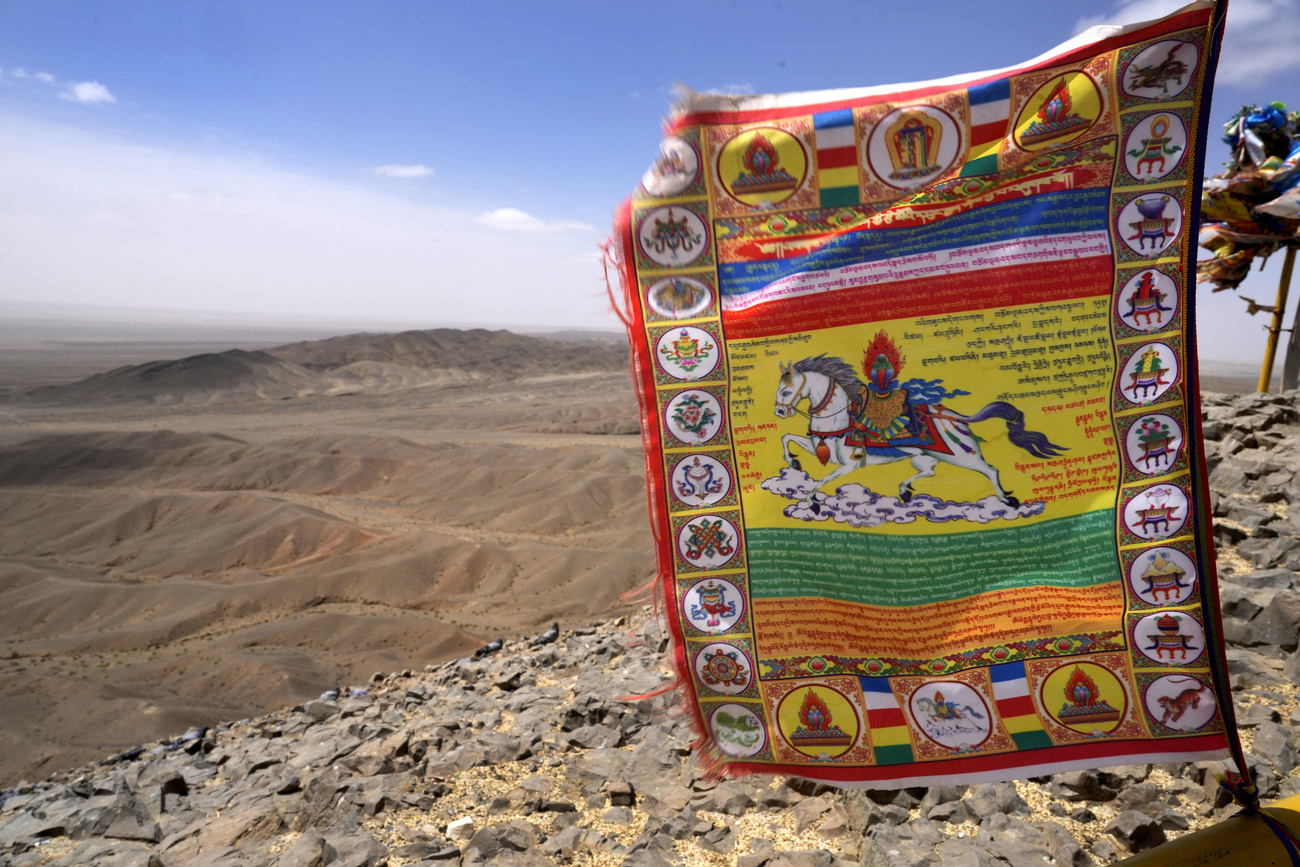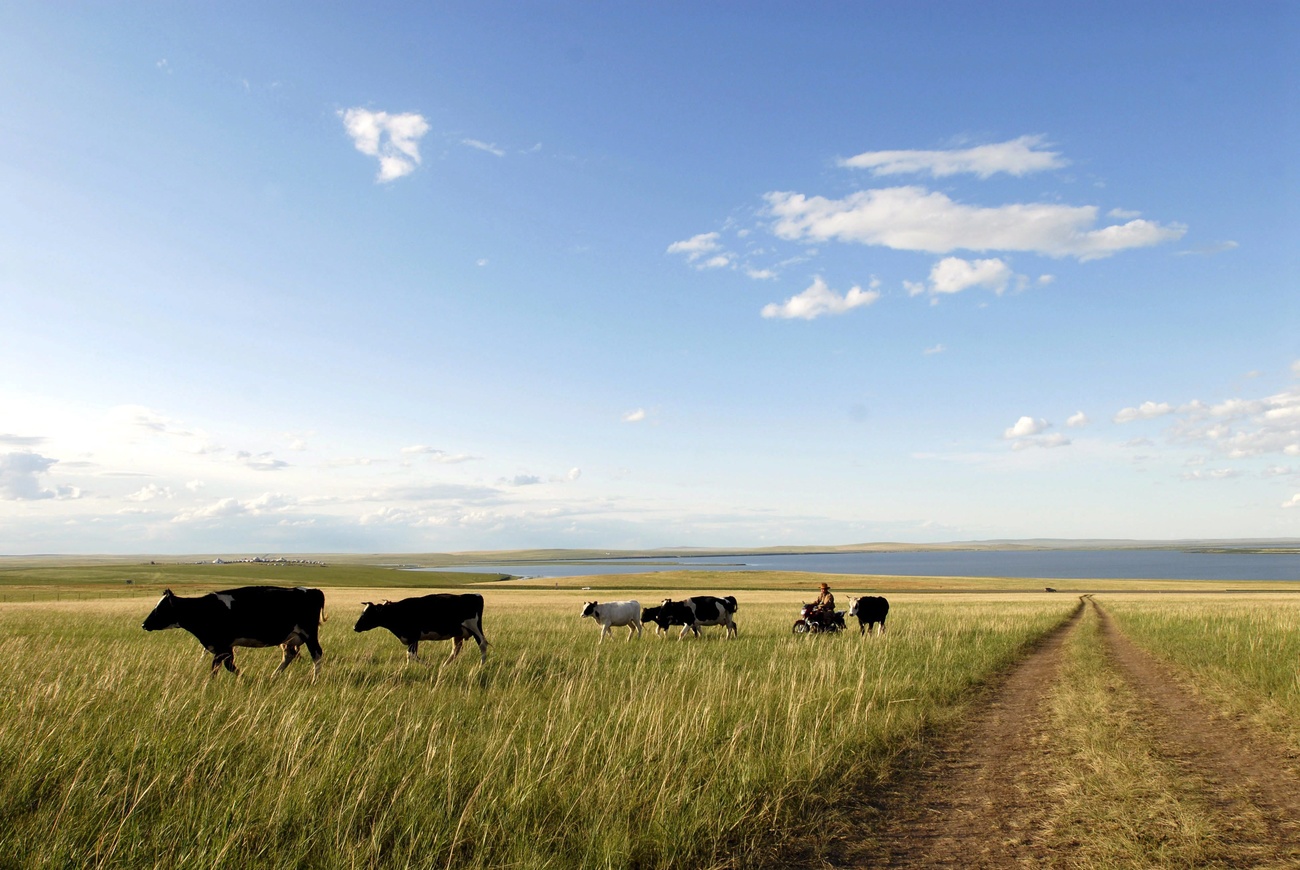
Why Switzerland is ending development aid to Mongolia

After promoting sustainable livestock farming and education for two decades, the Swiss Agency for Development and Cooperation (SDC) will discontinue its programme in Mongolia at the end of 2024. This is in line with the new direction of its foreign policy.
The SDC opened its cooperation office in Mongolia’s capital Ulaanbaatar in 2004, three years after it had launched its assistance programme in the landlocked Asian country. Switzerland’s assistance aimed to promote sustainable livestock farming and food security.
Nomadic livestock farming is of great cultural, societal and economic significance in Mongolia. Around 110 million hectares or 70% of the country, which is almost 38 times larger than Switzerland, is covered in grassland – and intact grassland is the most important livelihood for the nomads. It is called “Green Gold” in Mongolia.
The heavy use of pastures and the effects of climate change are extremely challenging for Mongolia. The number of livestock, particularly goats, has increased considerably over the last few decades, which is partially due to the rising demand for cashmere wool. However, the heavy use and frequent overuse of the land reduces the biodiversity and leads to the desertification of the land.

Yak leather footballs and new potatoes
Together with the nomads, Mongolian authorities and other partners, the SDC launched the “Green Gold and Animal Health” project in 2004. Based on agreements with local authorities, the nomads have committed to cultivate the land communally and sustainably.
According to indicators, such as the number and type of plants, it was determined which zones should be opened for grazing and which ones should be protected. So far, more than 92,000 nomad families have made a contractual commitment to sustainable rangeland management which now covers half of the entire grazing land.
“Switzerland has played a significant role in rehabilitating more than 20 million hectares of fallow grazing land within 15 years. This is almost five times the size of Switzerland,” says Stefanie Burri, head of the SDC cooperation office and Swiss consul in Mongolia.
At the same time, Switzerland also contributed to reduce desertification. The project, which has now come to an end, has also proved successful in rolling out a digital system for tracking animal products. It aims to provide information on hygiene and food security.
The project also helped set up more than 76 nomadic cooperatives across the country which manufacture and sell products under their own label dubbed “Responsible Nomads”. Burri believes in the success of this concept. The internationally renowned Mongolian rock band “The Hu”, for example, produces its leather merchandise under this brand.
The “Responsible Nomad” label also banks on innovation. Yaks are traditionally used as pack animals in Mongolia which means their hair and leather are considered low quality. However, the project has developed a special type of comb to extract good quality yak wool which can be used for scarves, jumpers or blankets. And a new start-up in the capital Ulaanbaatar produces handmade footballs from yak leather.
In the food security sector, the SDC supported a state-run research project which developed a climate-resistant potato variety. Thanks to this project, Mongolia is now able to meet its own demand for potatoes and does not have to import them from China. The quality of seeds has also been improved which means that more carrots, cabbages and beetroot are now planted.
Democratic reforms and scholarships
The SDC’s budget between 2022 and 2024 stands at CHF 8.2 million which is significantly less than the CHF 46.4 million for the period between 2018 and 2021. The funds are allocated for projects on good governance, climate change and the environment as well as inclusive economic development. The SDC also worked on decentralisation and democratic reforms in Mongolia. For example, it helped push through a new law to increase the financial power of local governments by allocating 40% of the [national] tax revenues to them. Furthermore, Mongolians can now initiate motions and resolutions which are discussed in the local councils.
Since 2017, Switzerland has supported the Secretariat of Mongolia’s parliament (State Great Hural) by providing training and promoting parliamentarian oversight. The Secretariat offers advice during all stages of the legislative process.
“The cooperation between the Secretariat of the Great Hural and the SDC has significantly contributed to the promotion of parliamentary democracy in Mongolia,” says Luvsandorj Ulziisaikhan, Secretary General of Mongolia’s parliament. He points out that the number of citizens participating in the democratic process has grown, and local governance has improved.
The SDC initiated an exchange with regular visits by Mongolian parliamentarians in Switzerland and vice versa. The visits are due to continue beyond 2024.
Switzerland also provided support for vocational training and the establishment of start-up companies. For years, it has worked with the Zorig Foundation (ZF), a Mongolian non-governmental organisation (NGO) which offers scholarships for disadvantaged students. The SDC funded almost half of the 2,900 scholarships, 60% of which were given to women.
“The high employment rate of scholars is a clear sign that investing in talented young people who cannot afford a university degree has a lasting [positive] impact on their careers and livelihoods,” says the foundation’s director Tsolmon Bayar.

Swiss foreign policy’s new direction
The strategy for international cooperation 2021-2024 aims to concentrate more on fragile contexts. For this reason, the SDC decided to end its bilateral development cooperation with 11 of the 46 countries as of the end of 2024. Mongolia is one of these countries.
Critics in Switzerland view this move as a paradigm shift from humanitarian work to a type of development cooperation that is motivated by Swiss foreign policy to influence migration flows.
The human resources in Mongolia are gradually being reduced. The number of SDC employees in Mongolia has dropped from 28 in 2020 to currently 12. The organisation has handed over its projects to the national and local governments as well as to research institutes and universities in the country.
All partners of the projects had been involved in the projects in the past and either contributed financially or provided infrastructure which has paid off: the projects are due to continue even after the SDC has closed its programmes in Mongolia. “It is important to pass laws that provide local authorities with budgets for such projects,” says Burri.
Need for reforms
Switzerland will continue to be represented in Mongolia, albeit more indirectly. It will cooperate with institutions like the Asian Development Bank, the World Bank and UN agencies such as the UN Development Programme (UNDP).
“The biggest challenge Mongolia faces is climate change,” says Burri. The desertification of the country is increasingly visible. Half of the 3.5 million people now live in the capital Ulaanbaatar; youth unemployment is high at 19%; and the government is heavily indebted.”

Mongolia still deeply relies on exporting raw materials. Most of the country’s revenues are generated through mining coal, copper, uranium, gold and in the future also rare earths. Mongolia exports gold worth CHF1 billion to Switzerland alone per year.
The government currently promotes the processing of products. Mongolia wants to expand its solar and wind energy infrastructure with the goal to replace coal as an energy source by 2050.
Swiss Mongolian partnership continues
Next year, Switzerland and Mongolia will celebrate the 60th anniversary of their diplomatic relations. Burri thinks that this long partnership has created trust and offers the opportunity for new joint activities. “While one stage comes to an end, new doors open.”
The exhibition of the Rietberg Museum in Zurich is one such example. Together with the Mongolian Ministry of Culture, the museum wants to stage an exhibition on Mongolia’s urbanisation in 2025. And the Geneva Centre for Security Policy (GCSP) wants to establish a regional hub for training defence attachés in Ulaanbaatar.
Translated by Billi Bierling

In compliance with the JTI standards
More: SWI swissinfo.ch certified by the Journalism Trust Initiative































You can find an overview of ongoing debates with our journalists here . Please join us!
If you want to start a conversation about a topic raised in this article or want to report factual errors, email us at english@swissinfo.ch.